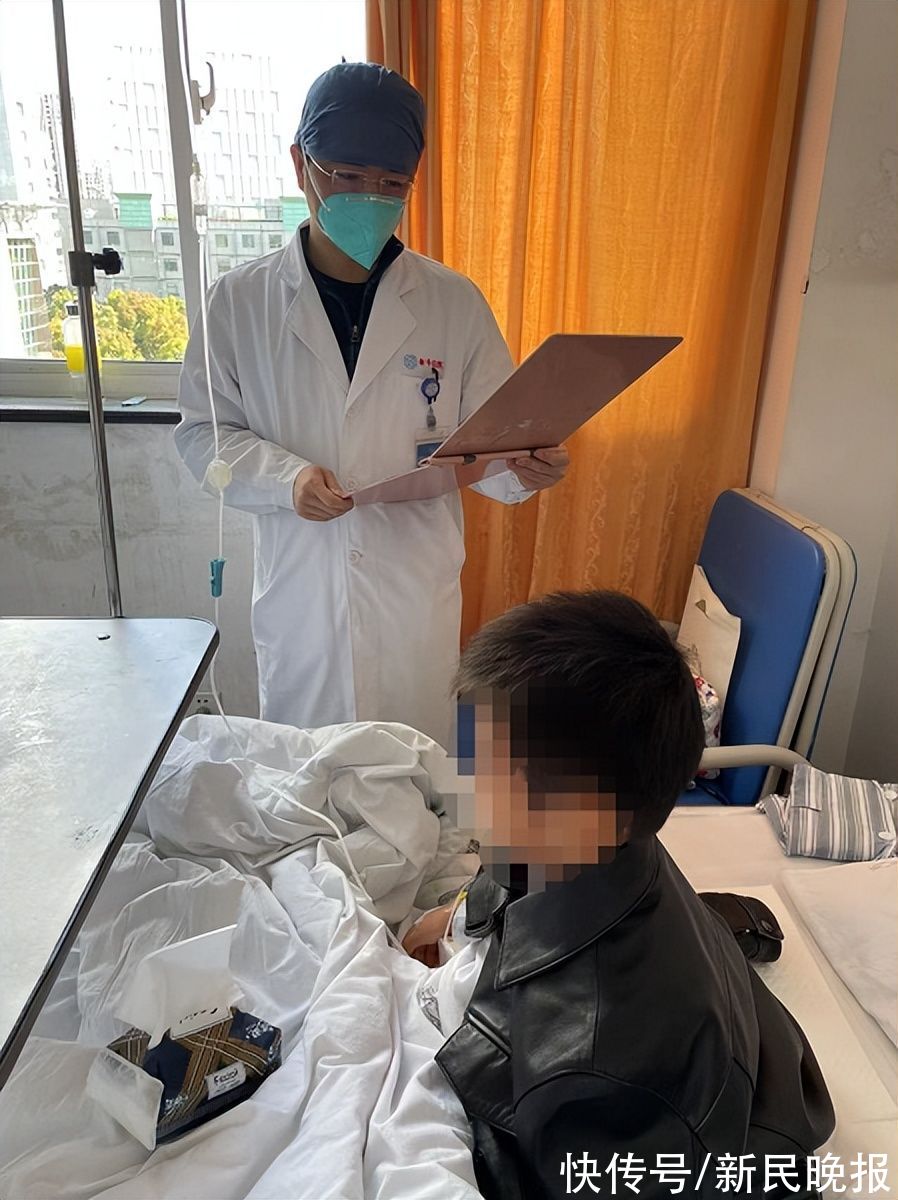On the evening of April 1, a 120 ambulance drove from a hospital in Fengxian District to the emergency room of Xinhua Hospital Affiliated to Shanghai Jiaotong University School of Medicine. There was a family of three. The 5-year-old boy was in great pain. His skin seemed to be scalded with large blisters. Waiting in the emergency room was Feng Xiaobo, Deputy Chief Physician of the Department of Dermatology of Xinhua Hospital, who quickly received the child.

Caption: The painful boy was successfully transferred to the hospital for the interview object
Before the 120 delivery, a doctor from this hospital urgently contacted the dermatology department of Xinhua Hospital, saying that they had treated a severely ill child with skin disease and hoped that transfer. Liang Jianying, the head of the dermatology clinic, after carefully asking about the child’s basic situation, immediately agreed to accept it, and told Dr. Feng Xiaobo to wait in the emergency room.
“Inter-hospital referral for critical illness is often the most important life path. If it comes from a closed-and-controlled community, we have prepared emergency plans. Severe cases must be saved. Don’t delay.” Yao Zhirong, director of the dermatology department of Xinhua Hospital.
Dr. Feng Xiaobo saw during the physical examination that the skin of the child’s head, face, torso, and limbs was terrifyingly dark red, and most of the epidermis covered had turned black. It can be avulsed, and the skin of the mandible, armpit, and scrotal folds has formed blisters and erosions. “Although this child’s skin symptoms are similar to burns, it’s not burns, but toxic epidermal necrolysis!”
What is this disease? How do you get it? The 5-year-old child cried out in pain intermittently, and his father hugged him for fear of hurting him, so he could only hold it with his arms as effortlessly as possible. The mother, who was crying and red-eyed, held a stack of medical records in her hands to record the medical treatment in the past few days. .
Inquired about the medical history in detail, and the parents told the process: On March 29, the child developed a sore throat and then had a fever. Mom and Dad thought it might just be a common cold, so they gave the child a cephalosporin at home. Before long, the child felt itchy and red skin. After taking another cephalosporin, the body temperature still does not drop. His parents took him to the hospital’s fever clinic for investigation. Initially, the skin symptoms were not very serious. After the new crown was ruled out, he prescribed some anti-allergy medicine and went home. Unexpectedly, the child’s fever still did not go away, and the skin on the torso began to blister, and the progress was very fast.
At this time, when I went to the hospital again, the receiving doctor felt that the situation was serious and needed a referral. The problem is that the family of the child is from a closed community, and there are positive infected people in the community. The family members were very concerned about this. But doctors reassured them. Dr. Feng Xiaobo immediately started the plan and reported the situation to the medical department, department director, outpatient and emergency team leader, ward chief physician, and head nurse, and everyone responded immediately.
Toxic epidermal necrolysis is a “drug-induced dermatitis”. Although the incidence is not high, it has abrupt onset and rapid progression. Electrolyte disturbances, circulatory failure, impaired liver function, etc., and the literature records a fatality rate of about 25%. According to the experience of the dermatology department of Xinhua Hospital, toxic epidermal necrolysis must be in a race against time. Only after symptomatic treatment can the crisis be turned into a safe place and the sequelae can be reduced.
On the evening of April 1, the child was admitted to the emergency isolation single ward of the dermatology department while being screened for the new crown to carry out standardized symptomatic treatment. On April 2, after the child and the parents were ruled out of the new crown infection, the body temperature also returned to normal simultaneously, and the rash did not progress further.
Yao Zhirong said: “Whether this child’s disease is caused by drugs alone or combined with other diseases requires further examination and diagnosis.” He reminded that during the lockdown period, no Mild symptoms should be underestimated or ignored, and antibiotics that you have never used or seldom eaten should not be taken lightly, so as to avoid major lesions.
Our reporter Zuo Yan